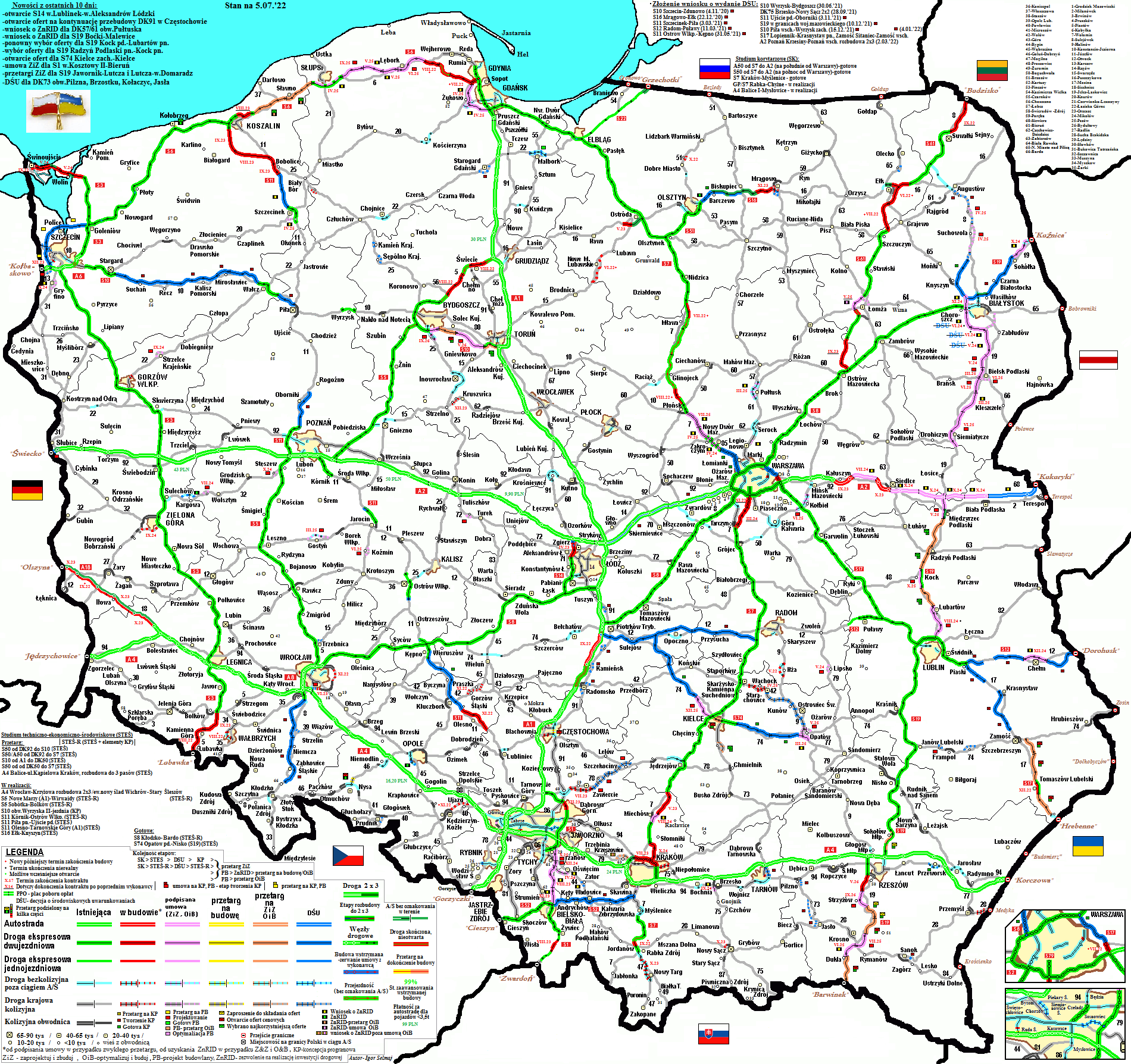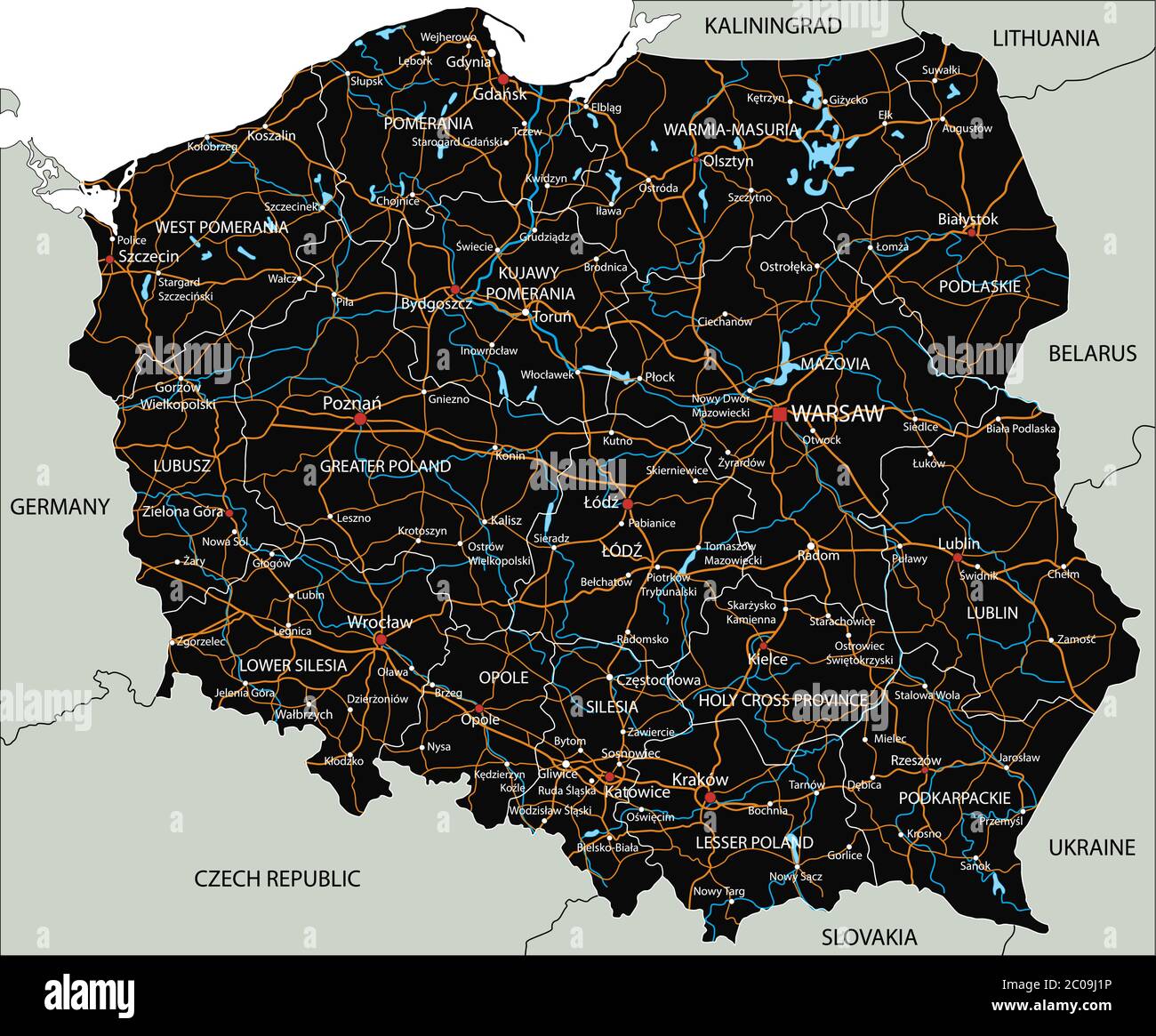When it comes to transportation, Poland boasts an extensive network of motorways, a crucial component of its infrastructure that ensures seamless connectivity and efficient movement of goods and people across the country.
Editor's Notes: "Motorways In Poland: A Comprehensive Guide To Poland's Extensive Road Network" have published today date". Understanding the significance of these motorways is vital to appreciate their role in facilitating economic growth, enhancing accessibility, and fostering trade and tourism.
Through meticulous analysis and in-depth research, we have meticulously compiled this comprehensive guide to Poland's motorways. Our goal is to provide valuable insights that empower you to make informed decisions and optimize your travel experiences within Poland.
FAQs
This Frequently Asked Questions (FAQ) section will provide insightful answers to common questions regarding Poland's extensive motorway network.
Question 1: What is the total length of motorways in Poland?
As of 2023, Poland boasts an impressive 4,856 kilometers (3,017 miles) of motorways, connecting major cities and regions throughout the country.
Question 2: What are the speed limits on motorways in Poland?
On most sections of Polish motorways, the speed limit is set at 140 kilometers per hour (87 miles per hour), which is among the highest in Europe.
Question 3: Are there any tolls on motorways in Poland?
Currently, there are no tolls for using the motorways in Poland. However, the government is considering implementing a toll system in the future.
Question 4: Are motorways in Poland safe to drive on?
Polish motorways are generally well-maintained and safe to drive on. They feature modern infrastructure, including emergency lanes, rest areas, and traffic monitoring systems.
Question 5: What are the major motorways in Poland?
The most important motorways in Poland include the A1 (North-South Motorway), A2 (East-West Motorway), A4 (Breslau-Krakow Motorway), and A6 (Coastal Motorway).
Question 6: Are there any scenic motorways in Poland?
Yes, several motorways in Poland offer breathtaking views of the country's diverse landscapes. The A4 motorway, for example, passes through picturesque mountain ranges and valleys in southern Poland.
Tips
If you are planning to drive on motorways in Poland, here are some tips to help you have a safe and enjoyable journey.
Tip 1: Before you start your journey, make sure you are familiar with the Polish road signs and traffic rules. Motorways In Poland: A Comprehensive Guide To Poland's Extensive Road Network provides a comprehensive guide to Polish road signs and traffic regulations.
Tip 2: Be aware of the speed limits on motorways in Poland. The general speed limit is 140 km/h (87 mph), but it can vary depending on the road conditions and the type of vehicle you are driving.
Tip 3: Keep a safe distance between you and the vehicle in front of you. The recommended following distance is 2 seconds in good weather conditions and 4 seconds in wet or icy conditions.
Tip 4: Be aware of the fact that Polish motorways are often very busy, especially during peak hours. If you are driving during these times, be patient and allow yourself plenty of time to get to your destination.
Tip 5: Make sure you have a good map or GPS system to help you navigate the Polish motorway network. There are a number of different maps and GPS systems available, so choose one that is best suited to your needs.
Tip 6: If you need to stop for a break, there are a number of rest areas located along the Polish motorway network. These rest areas provide a place to stop and rest, use the bathroom, and get something to eat or drink.
Tip 7: If you experience any problems with your vehicle while driving on a Polish motorway, pull over to the side of the road and call for assistance. There are a number of different roadside assistance services available in Poland, so you should be able to get help quickly and easily.
Tip 8: Be aware of the fact that Polish motorways are subject to tolls. The tolls vary depending on the type of vehicle you are driving and the distance you are traveling. You can pay the tolls in cash, by credit card, or by using a prepaid card.
By following these tips, you can help to ensure that you have a safe and enjoyable journey on the Polish motorway network.
Motorways In Poland: A Comprehensive Guide To Poland's Extensive Road Network
Poland's motorway network is a vital part of the country's infrastructure, connecting major cities and providing access to neighboring countries. The motorways are well-maintained and offer a safe and efficient way to travel. Here are six key aspects of Poland's motorway network:
- Length: Poland has over 4,000 km of motorways, making it one of the most extensive motorway networks in Europe.
- Quality: The motorways are well-maintained and meet high safety standards.
- Connectivity: The motorway network connects all major cities in Poland and provides access to neighboring countries.
- Tolls: Most motorways in Poland are toll roads, but there are some free sections.
- Safety: The motorways are patrolled by the police and have a good safety record.
- Accessibility: The motorways are accessible to all types of vehicles.
The motorway network in Poland is a major asset to the country. It provides a safe and efficient way to travel, and it connects major cities and regions. The motorways are also a major economic driver, as they facilitate the transportation of goods and people.

Motorways in Poland : r/MapPorn - Source www.reddit.com

Highways in Poland - Wikiwand - Source www.wikiwand.com
Motorways In Poland: A Comprehensive Guide To Poland's Extensive Road Network
The Polish motorway network, with its well-developed infrastructure, plays a crucial role in the country's transportation system. It connects major cities, industrial centers, and borders, facilitating both domestic and international travel. The motorways provide efficient and safe routes for long-distance journeys, supporting economic activities, trade, and tourism.

High detailed Poland road map with labeling Stock Vector Image & Art - Source www.alamy.com
The well-maintained roads reduce travel time, improve accessibility, and contribute to overall economic growth. Additionally, the motorways enhance regional connectivity, fostering stronger ties between different parts of Poland. Their strategic importance extends to international trade, as they serve as vital links to neighboring countries and beyond.
Moreover, the Polish motorway network contributes to improved safety standards in road transportation. The controlled-access design, clear signage, and modern infrastructure minimize accidents and create a smoother driving experience. Advanced technologies, such as intelligent transportation systems, further enhance safety by providing real-time traffic information and incident management.
In conclusion, the Polish motorway network is an integral part of the country's infrastructure, enabling efficient transportation, economic development, and enhanced safety. Its continued maintenance and expansion are essential for sustaining the economic growth and mobility needs of Poland.
To further explore the details of Poland's extensive motorway network, refer to the comprehensive guide: "Motorways In Poland: A Comprehensive Guide To Poland's Extensive Road Network".
Conclusion
The Polish motorway network stands as a testament to the country's commitment to modern infrastructure and economic progress. Through strategic planning and ongoing investments, Poland has created a highly efficient road system that connects its major cities, supports trade and tourism, and enhances safety standards. As the country continues to develop, the expansion and modernization of its motorways will remain a vital aspect of its infrastructure strategy.
The comprehensive guide, "Motorways In Poland: A Comprehensive Guide To Poland's Extensive Road Network", provides valuable insights for those interested in understanding the complexities and significance of this remarkable network. It offers detailed information on the history, current state, and future plans for Poland's motorways, making it an invaluable resource for policymakers, industry professionals, and anyone seeking to grasp the integral role of infrastructure in economic development.